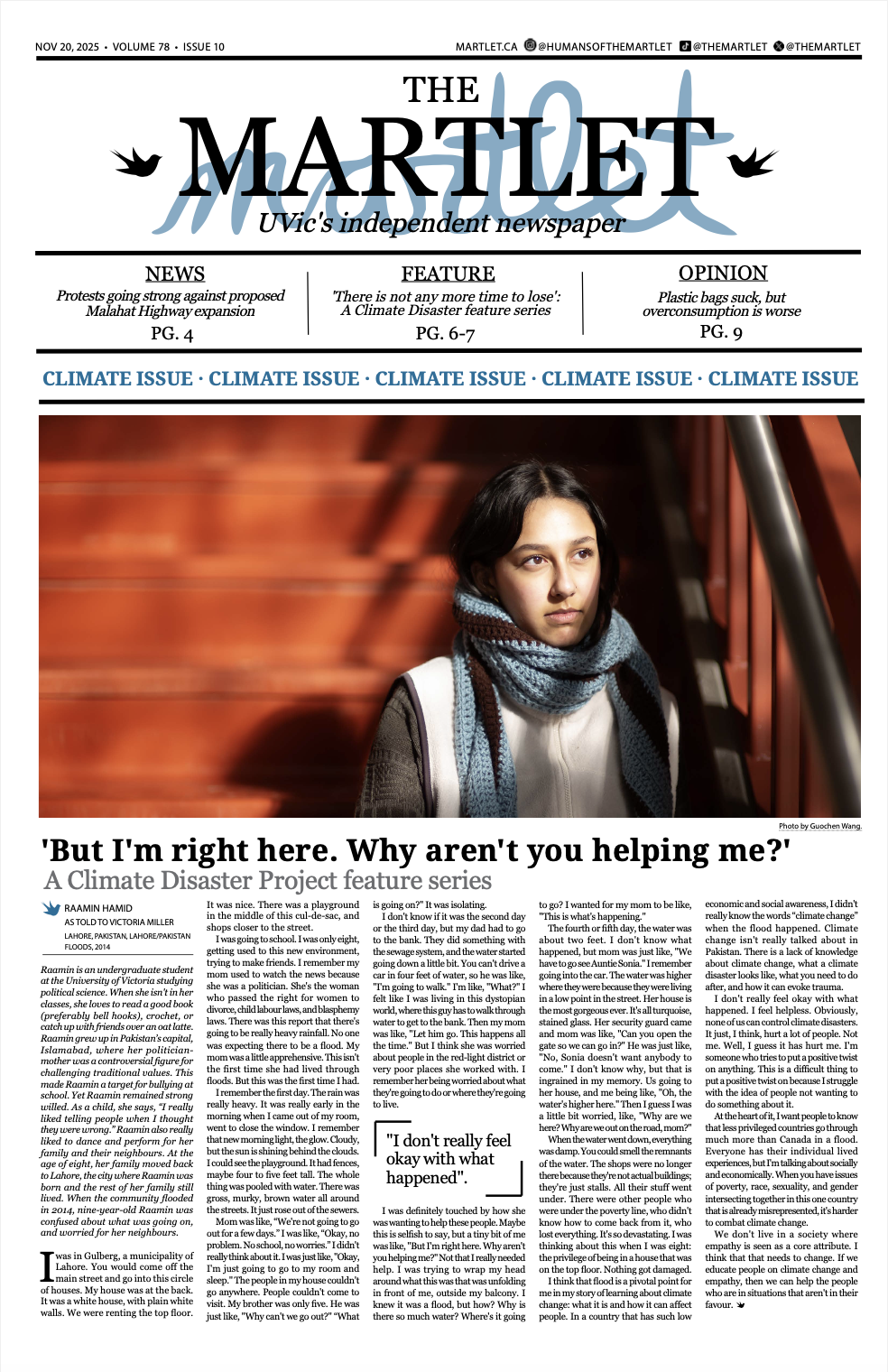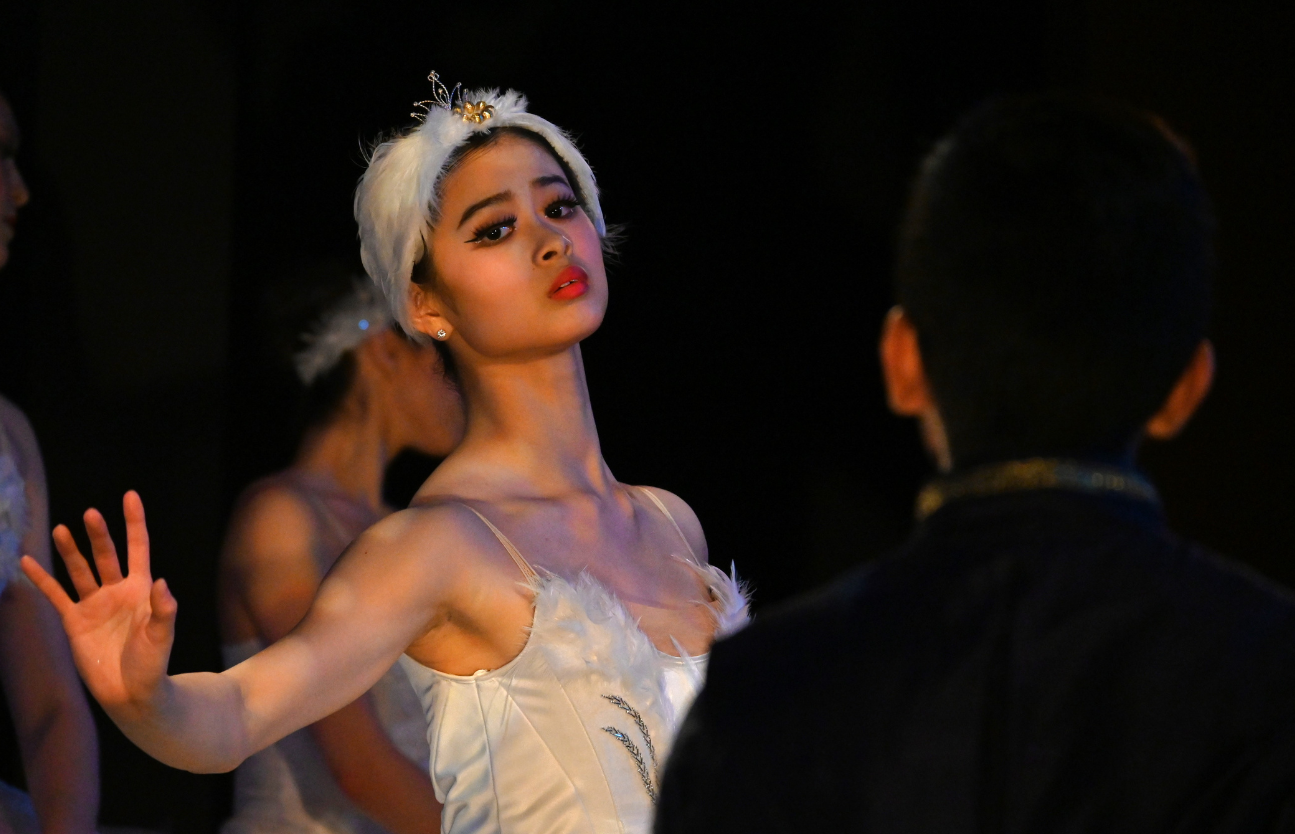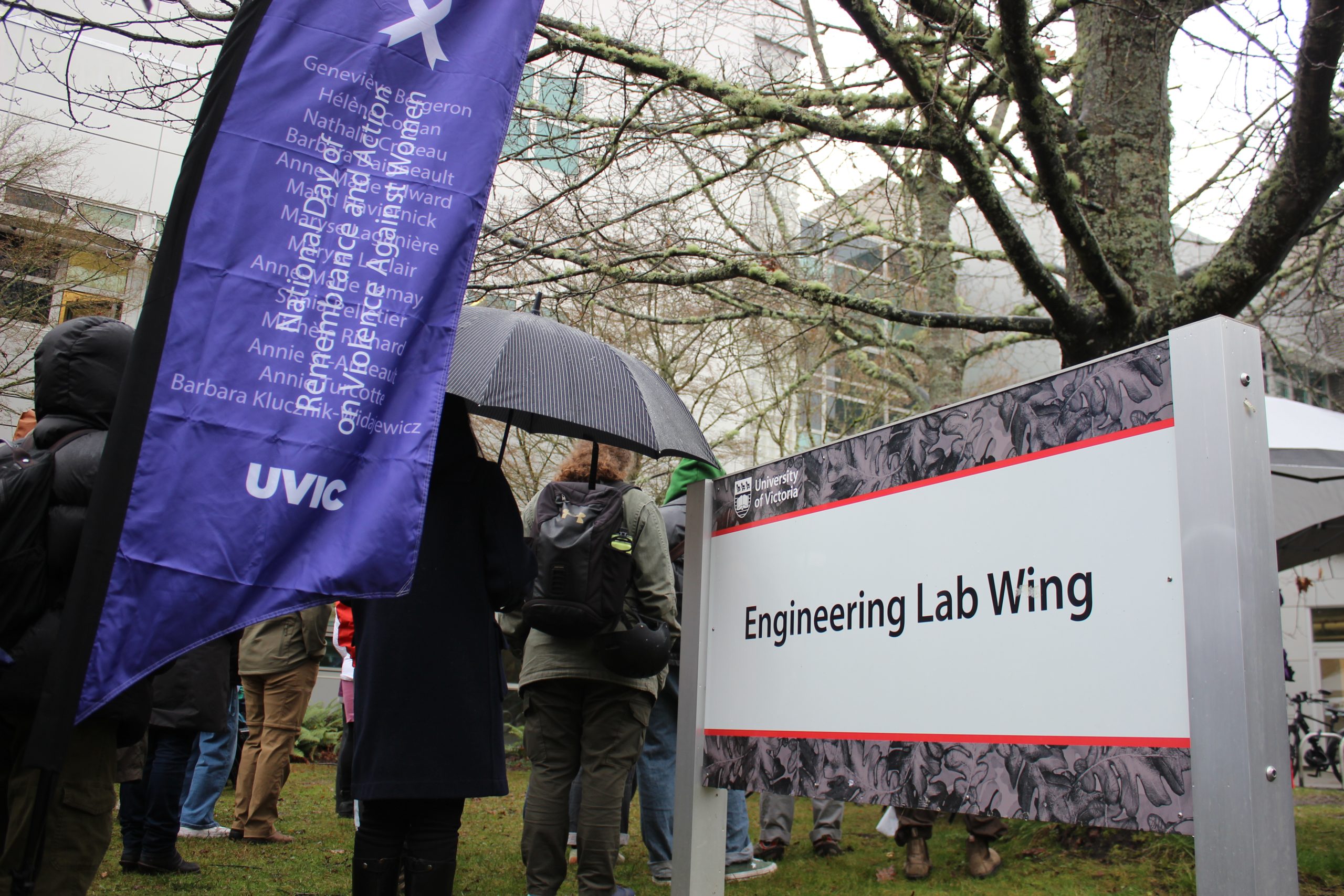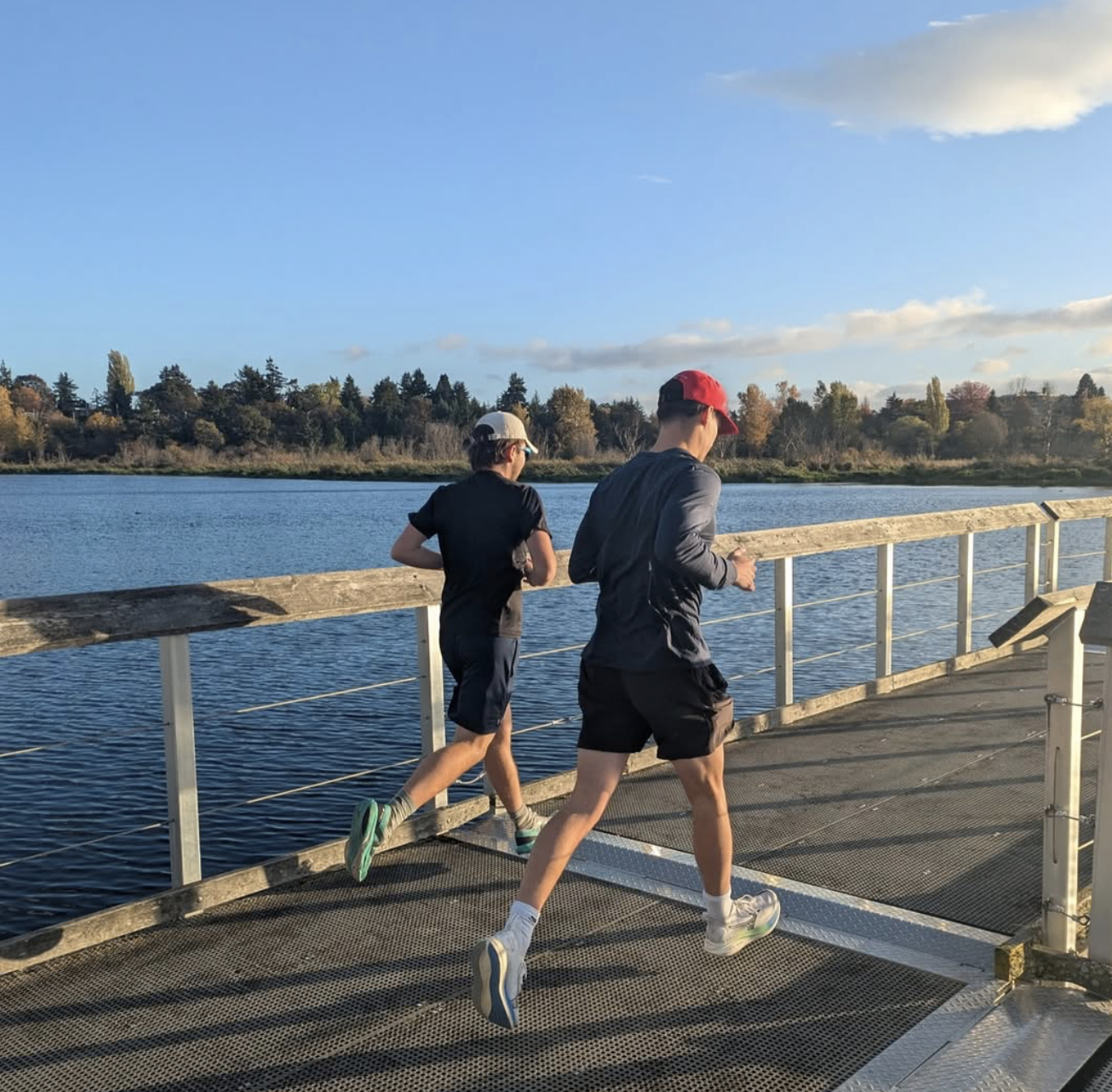UVic “Modern Love” Stories, inspired by the New York Times column
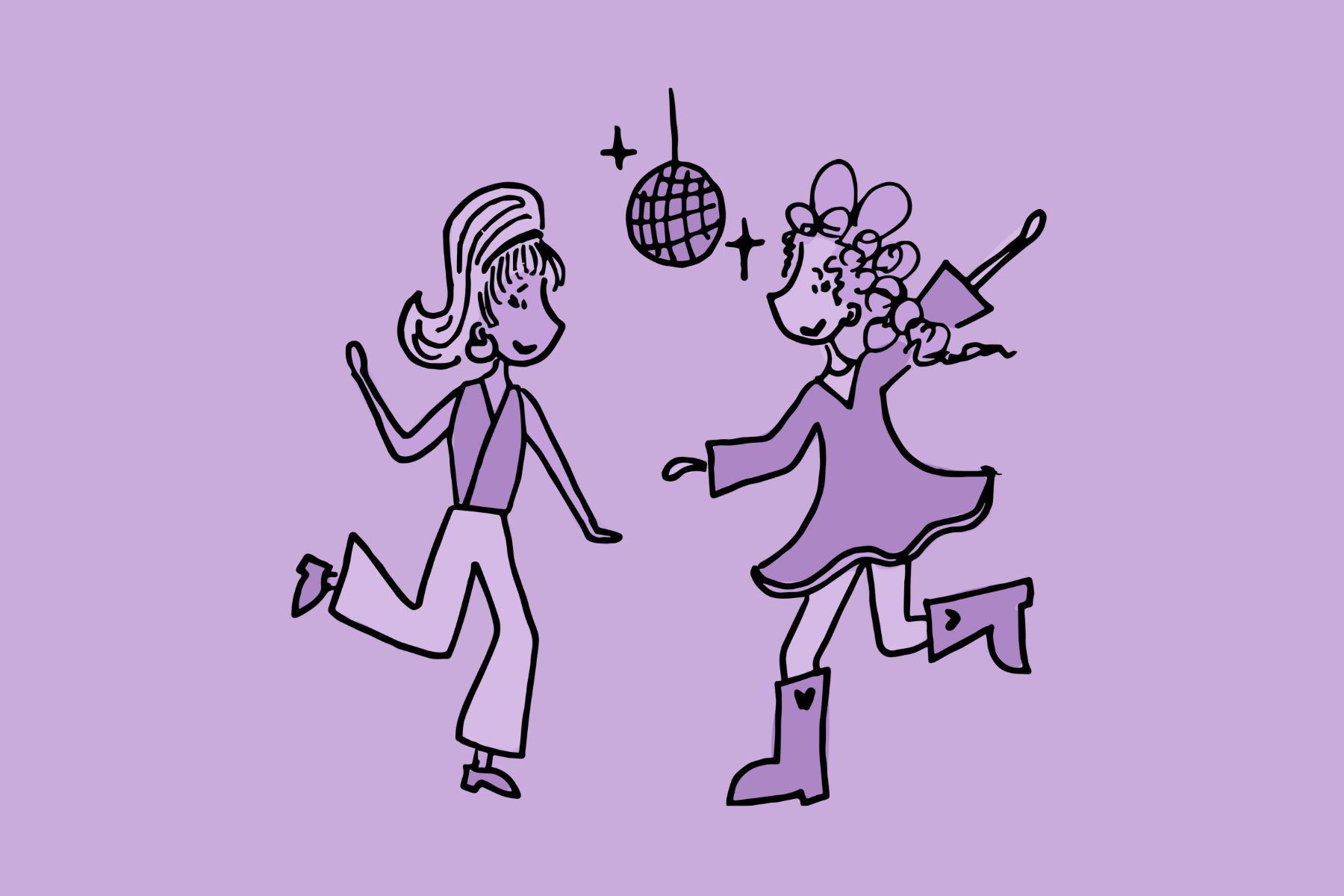
Illustration by Sage Blackwell.
It started with a story and became so much more.
I know Robyn through my sister. A friend of a friend-turned-friend, I’m shown a photo of them at the Halloween showcase their dance studio does every year, where Robyn wears a red cape and smiles broadly. My sister tells me Robyn is an anthropology PhD student at the university and that they dance drag and burlesque.
My sister looks over to where I am sitting in her apartment, “They do something with monkeys, I think?” I’m instantly curious.
I remember Robyn when I’m sitting in office hours with my university writing professor, fumbling around for a story idea that will make his eyes twinkle.
“Could I do an immersive story on drag? I know of a performer.” Twinkle. Victory.
I meet up with Robyn as soon as I can for our first interview.
Gigi’s Cafe is warm and loud. Wonderful atmosphere, terrible audio. It’s not that there are many people, no — it’s the middle of the day, so the wooden tables near bursting cork boards are sparsely occupied by laptop-slapping tenants—it’s the shrieking milk steamer that has me on edge.
I think I’m early. I shoot Robyn a text. I’m sitting at a bar table repeatedly picking up my sandwich and then putting it back down unbitten. I’m hungry, but I’m wearing smudgeable lipstick, and I can’t decide if the food is worth the aesthetic risk.
I am stuck in this limbo until one of the laptop tenants walks over.
“Hi! I think you’re here to talk to me?”
Robyn wears a grey sweater and a carabiner on their belt loop and offers me a signature broad smile. I pick up my whole sandwich and bring it over to Robyn’s table.
Now that I’ve met Robyn, the story feels real — although my research for the immersive drag story officially began a few days prior when I attended a drag class at a local dance studio. I figured if I was going to do this, I should do it right. I needed to get immersed.
The class, at Robyn’s dance studio, Passion and Performance, takes place in a small room with black floor and a mirrored wall. Studio C. It is taught by an energetic person with lime green hair that I am later informed is Leo Moon, one of Robyn’s drag parents and “the island’s premier tap-dancing clown.”
There are about seven people in the room ranging from ages 22 to 80, and they can all probably fall comfortably under the umbrella term “lovable misfits.”
Leo is a proponent of “king and thing” drag. Often, people think of drag in binary terms of kings and queens, but people can perform as a wide array of genders and bugs, clowns, monsters, elves, and more. Robyn’s stage persona is nonbinary clown “Robyn Hearts,” a name given to them at their very first drag class by their future drag sibling, Oliver Clozoff.
During the class, we practice a bit of the dance they will do at their next showcase. As a person pretty left of feminine myself, I’m thinking about what performing gender looks like to me in this space and outside of it. I’m surprised that it’s not a masculine persona that comes easy to me, but a hyper-fem one as we move about the room. The energy is a strange kind of joy.
When we meet at the cafe a couple of days later, Robyn tells me that drag isn’t sexual — or at least it’s not any more or less sexual than any kind of dance can be. Robyn does “draglesque” shows, but they also do all-ages drag and have recently been using the medium to explore their racial identity. Their family’s history with Canada’s Japanese internment has created a pervasive silence around their heritage, but blending Japanese American music artist Mitski with Odori (traditional Japanese folk dancing) is one way Robyn can connect to that side of themselves.
They also tell me that when they first got back into dance, they didn’t think drag and erotic styles were where they were going to end up. They had done a lot of ladies’ styling, such as bachata, salsa, and tango, which required them to present a specific image of womanhood, but using they/she pronouns, Robyn doesn’t identify as a woman, and they could feel the friction.
But when they got into the dance forms they do now, they were surprised how right it felt to move in them. Even if they were performing very feminine, they felt in control and in charge of how they were being perceived. As Robyn Hearts, they feel they present more as a creature than any kind of gender — and it’s freeing.
Because I am a thorough and committed writer and want to be properly immersed in the world of my story’s subject, I sign up for a burlesque class, too. It happens to take place in Studio C as well; same black floor and mirrored wall, except now the overhead lights are off, and bright red and blue circular LED panels illuminate the small room in a dramatic way.
Now is probably as good a time as any to admit that I’ve never kissed anyone before; I didn’t start swearing until I was 18; I’ve been mistaken for Mormon at least twice; I am very disconnected from my body for many reasons; that is something I’m trying to work on; and all of these things probably led me to this room just as much as Robyn or any writing assignment.
This group is also about seven people who could also be described as lovable misfits. Or moms. Or moms that are lovable misfits. Our instructor is the illustrious Chai Tease, and I feel as though I am in safe hands as they introduce us to the session.
Much like it is important to acknowledge that drag was formed off the queer Black and Brown bodies of the New York 80s Ballroom scene, it must be acknowledged that we wouldn’t have burlesque without the labour of sex workers. These are facts the instructors bring up. These are facts Robyn brings up. These are the facts that I will bring up.
These forms of dancing can be fun and escapist, but they are also political. They are the way some choose to push back against certain governmental shifts. The faces in the studio come from many backgrounds, from submarine engineers to bakers to stay-at-home moms to law office staff to airport workers to students and more. People who may not have met otherwise, of all body types, in a room together for a taste of liberation.
Liberation is what I try to keep in mind as I do something called a “stripper push-up” and swing my hips, practicing seductively taking off a pair of stockings that someone kindly let me borrow. And you know what? Sometimes cultural resistance just looks like a good time.
One of the most intimate things we do within the hour, however, is at the beginning of the class, when we walk slowly across the floor while making eye contact with a partner. It is about purpose, it is about intent, it is about confidence, and it is terrifying. It’s also what gets me hooked.
I keep attending burlesque classes, finding I oddly like them more than drag. By the time I purchase a membership to the studio, I stop telling people I am doing research for a story I’m writing. I admit this is for me; I’m enjoying this.
I also keep seeing Robyn. I go to a couple of their shows, we meet on campus, and we even go out dancing. I learn about their PhD in chimpanzee behaviour, their love of the New England folk dance “contra,” and how they sew some of their own costume pieces.
My sister is surprised at first when I tell her that Robyn and I have been hanging out and that I’m taking classes for real. Luckily, she’s enthusiastically supportive, if not a little confused. It all seems a bit out of character. Maybe it is.
But I agree with Robyn — moving this way feels right to me. It’s fun. There is something freeing about performing gender to such an extreme. It feels like I’m in on it, instead of the butt of it, for once. I’m more in tune with myself, more self-assured, and reflecting more on how sanitized mainstream beauty is.
Dance isn’t for everyone, but I’m grateful I’ve gotten a taste of this community.
By the time I’ve gotten the grade back for my story, an A+ (let’s go), I’m signed up to perform at the same show Robyn will be in. It’ll be our first time dancing at the same event, and I’m excited. My group will be shedding clothes to “Fireflies” by Owl City. Boisterous resistance.
When we decide the cafe interview is over, I wrap my untouched sandwich in a napkin, and it’s a mess. Robyn suggests I get a box from the barista; I assure them I’m the youngest child and this is just how we do things. They don’t comment further.
They do invite me to do a heels class with them later that afternoon. I only own one pair of black scuffed heels, but this sounds like great research. I tell them I’ll do my best to make it.
They wave at me as they get their bike. I offer them a ride, but they tell me they are going across the street to get some greens for their gluten-intolerant rabbit Pokie anyways (who is also deaf and blind), so not to worry.
I wave back and head over to my car, where I finally eat my sandwich, and feel content to know that this is not the last I will see of Robyn.




